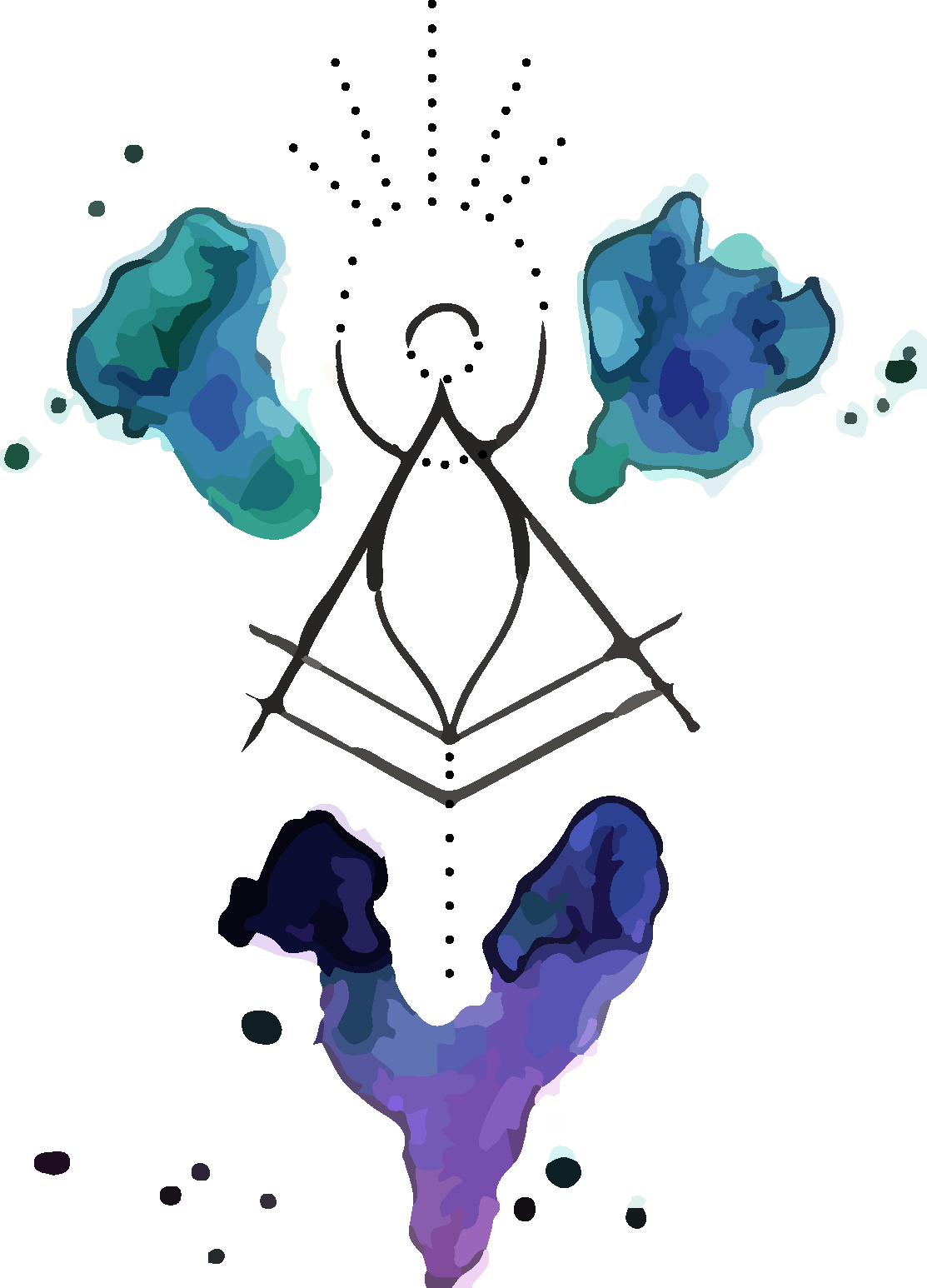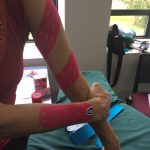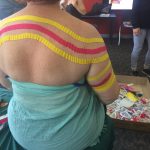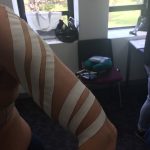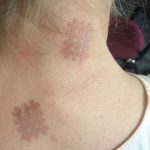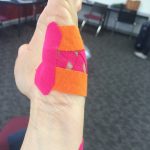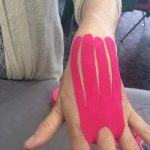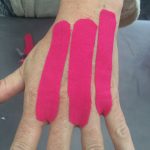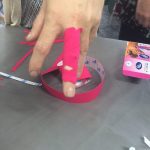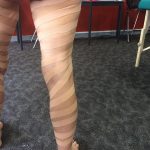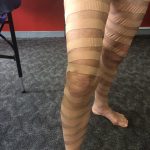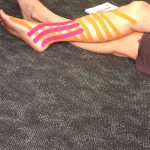This weekend was spent learning how to do Lymph Taping. We were taught by Joyce Bosman, assisted by my original Vodder trainer, Jan Douglass, who now runs the training in Australia.
Lymph Taping was developed in 1978 by Dr Kenzo Kase in Asia (Korea and Japan) and specific treatment methods for lymphoedema were not developed until 1995 by Ruth Copee from the USA. The Summer Olympic Games in 2008 was the worldwide breakthrough on taping – it finally became known to the public. There are many different names for the method – Kinesio-taping; Medical Taping Concept; Taping NeuroMuscular or NMT Methods, to name a few.
Lymph Taping uses an elastic cotton tape, we used Cure Tape all weekend. Some of the benefits are:
- increasing circulatory action and lymph flow
- analgesic
- maintenance and reduction of lymphoedema (primary and secondary) in limbs, face, breast, abdominal and genital areas
- reduction of fibrosis
- scar reduction
- reduction in sinus or cold symptoms, jaw irritation, ear infections or swelling around the eyes
- reduction in swelling post surgery or injury
- reduction of hematomas and bruising
Lymph Taping for lymphoedema is most effective in Stages 0, 1 and early stage 2, before the fluid turns to fat or becomes fibrotic.
The tape is applied over stretched skin which causes it to lift, creating space underneath. Wherever the tape is applied on the skin creates low pressure. It is applied in strips which creates an area of low pressure (under the tape) and high pressure next to it. Fluid naturally flows from high pressure to low pressure so the free fluid in the tissue under the skin will be “sucked up” by the tape.
Here are some photos of the day …
- arm oedema using Punch Tape
- arm oedema creating pathway away from affected limb
- arm oedema with nodes intact
- CrossLinq, for trigger points and acupuncture points, for pain
- scar reduction
- hand oedema
- hand oedema
- finger oedema
- leg oedema, back
- leg oedema, front
- lower leg oedema with pooling of fluid at medial ankle
As you can see, the tape comes in a variety of colours and can be cut to different widths to fit in with whatever condition is being treated. I haven’t included photos of treatment of breast oedema, abdominal and genital oedema for obvious reasons, but we covered all of those too.
